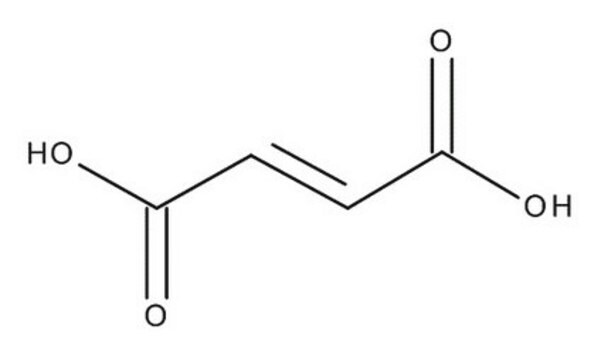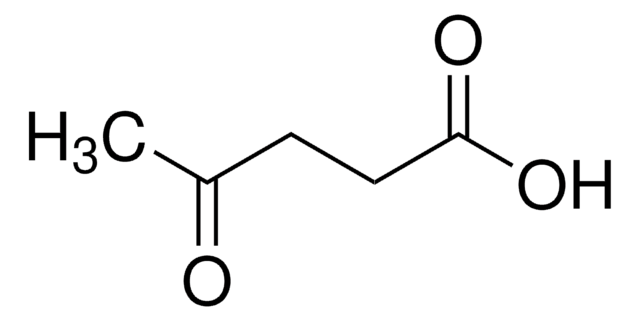Kluczowe dokumenty
W248800
Fumaric acid
FCC, FG
Synonim(y):
Boletic acid, Lichenic acid, Trans-1,2-ethylenedicarboxylic acid
About This Item
Polecane produkty
pochodzenie biologiczne
synthetic
Poziom jakości
klasa czystości
FG
Halal
Kosher
zgodność regionalna
EU Regulation 1334/2008 & 178/2002
FCC
FDA 21 CFR 117
FDA 21 CFR 172.350
FDA 21 CFR 175.105
ciśnienie pary
1.7 mmHg ( 165 °C)
Formularz
powder or crystals
temp. samozapłonu
1364 °F
granice wybuchowości
40 %
mp
298-300 °C (subl.) (lit.)
Zastosowanie
flavors and fragrances
Dokumentacja
see Safety & Documentation for available documents
alergen pokarmowy
no known allergens
Organoleptyczne
odorless
ciąg SMILES
OC(=O)\C=C\C(O)=O
InChI
1S/C4H4O4/c5-3(6)1-2-4(7)8/h1-2H,(H,5,6)(H,7,8)/b2-1+
Klucz InChI
VZCYOOQTPOCHFL-OWOJBTEDSA-N
Szukasz podobnych produktów? Odwiedź Przewodnik dotyczący porównywania produktów
Powiązane kategorie
Zastosowanie
Hasło ostrzegawcze
Warning
Zwroty wskazujące rodzaj zagrożenia
Zwroty wskazujące środki ostrożności
Klasyfikacja zagrożeń
Eye Irrit. 2
Kod klasy składowania
11 - Combustible Solids
Klasa zagrożenia wodnego (WGK)
WGK 1
Temperatura zapłonu (°F)
523.4 °F
Temperatura zapłonu (°C)
273 °C
Środki ochrony indywidualnej
dust mask type N95 (US), Eyeshields, Gloves
Wybierz jedną z najnowszych wersji:
Masz już ten produkt?
Dokumenty związane z niedawno zakupionymi produktami zostały zamieszczone w Bibliotece dokumentów.
Klienci oglądali również te produkty
Global Trade Item Number
| SKU | GTIN |
|---|---|
| W248800-10KG | |
| W248800-1KG-K | 4061834323037 |
| W248800-25KG | |
| W248800-SAMPLE | |
| W248800-10KG-K | |
| W248800-1KG | |
| W248800-25KG-K | 4061835518555 |
| W248800-SAMPLE-K | 4061834355281 |
Nasz zespół naukowców ma doświadczenie we wszystkich obszarach badań, w tym w naukach przyrodniczych, materiałoznawstwie, syntezie chemicznej, chromatografii, analityce i wielu innych dziedzinach.
Skontaktuj się z zespołem ds. pomocy technicznej








